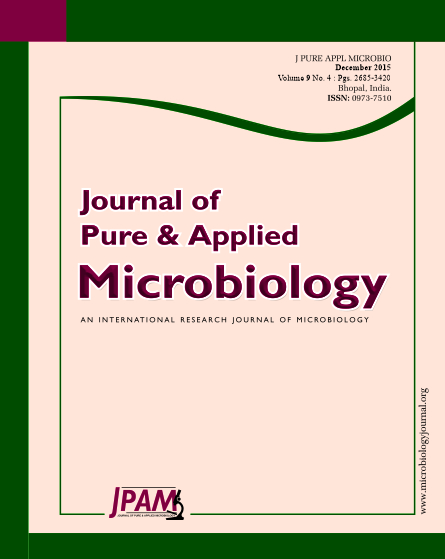Post harvest rhizome rots of turmeric are caused due to many fungal pathogens. The association of different Fusarium spp. and fungi belonging to hyphomycetes group were found with infected turmeric rhizomes. The pathogenesity of these fungi was proved under laboratory condition. The mean percent colonization and mean percent infection of turmeric rhizomes by incision method and pinprick method were studied and both were higher in incision method as compared to pinprick method.Highest percent infection was found in case of Fusarium oxysporum followed by Fusarium solani. Curcumin was extracted by solvent extraction method from both healthy and diseased rhizomes and the percent reduction in curcumin content of diseased sample over healthy sample was studied under laboratory condition and highest reduction in curcumin content was found to be 25.19% in the diseased sample affected by Fusarium solani.
Curcumin; Incision Method; Pin Prick; Post Harvest; Rhizome Rot; and Turmeric.
© The Author(s) 2015. Open Access. This article is distributed under the terms of the Creative Commons Attribution 4.0 International License which permits unrestricted use, sharing, distribution, and reproduction in any medium, provided you give appropriate credit to the original author(s) and the source, provide a link to the Creative Commons license, and indicate if changes were made.


